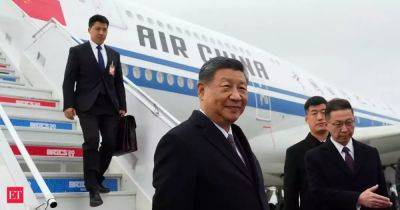Cambodia hopes a new canal will boost trade. But it risks harming the Mekong that feeds millions.
Cambodia has broken ground to build a $1.7 billion, China-funded canal to eventually link its capital Phnom Penh to the Gulf of Thailand
PREK TAKEO, Cambodia — The Mekong River is a lifeline for millions in the six countries it traverses on its way from its headwaters to the sea, sustaining the world’s largest inland fishery and abundant rice paddies on Vietnam's Mekong Delta.
Cambodia's plan to build a massive canal linking the Mekong to a port on on its own coast on the Gulf of Thailand is raising alarm that the project could devastate the river's natural flood systems, worsening droughts and depriving farmers on the delta of the nutrient-rich silt that has made Vietnam the world's third-largest rice exporter.
Cambodia hopes that the $1.7 billion Funan Techo canal, being built with Chinese help, will support its ambition to export directly from factories along the Mekong without relying on Vietnam, connecting the capital Phnom Penh with Kep province on Cambodia's southern coast.
At an Aug. 5 groundbreaking ceremony, Cambodian Prime Minister Hun Manet said the canal will be built “no matter what the cost.” By reducing costs of shipping to Cambodia's only deep-sea port, at Sihanoukville, the canal will promote, “national prestige, the territorial integrity and the development of Cambodia,” he said.
Along with those promises comes peril. Here is a closer look.
The Mekong River flows from China through Myanmar, Thailand, Laos, Cambodia and Vietnam. It supports a fishery that accounts for 15% of the global inland catch, worth over $11 billion annually, according to the nonprofit World Wildlife Fund. Flooding during the wet season makes the Mekong Delta one of the world's most productive farm regions.
The river already
Read more on abcnews.go.com





















